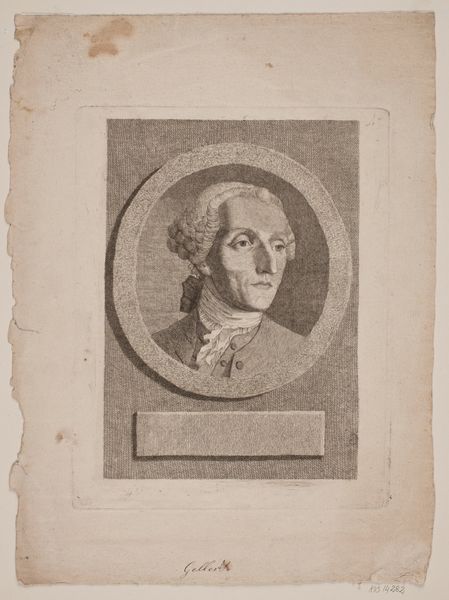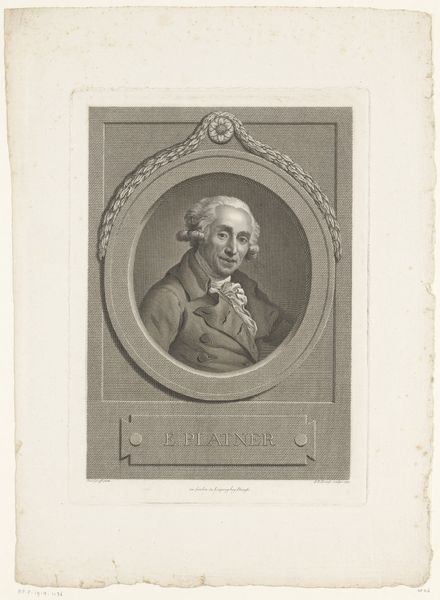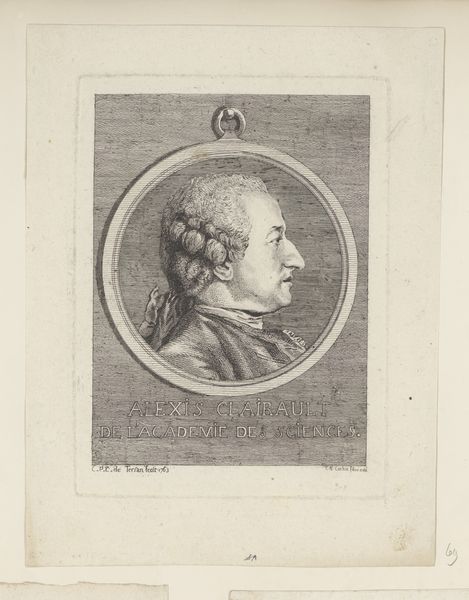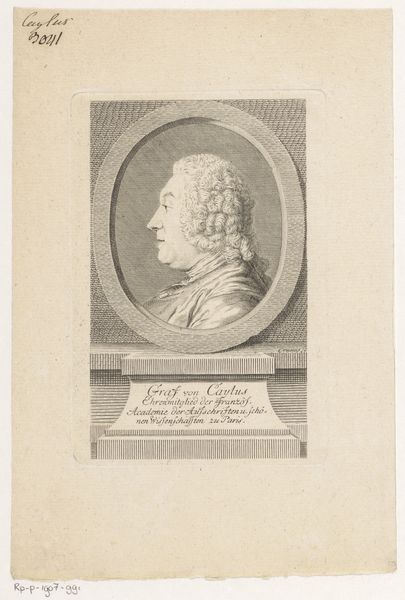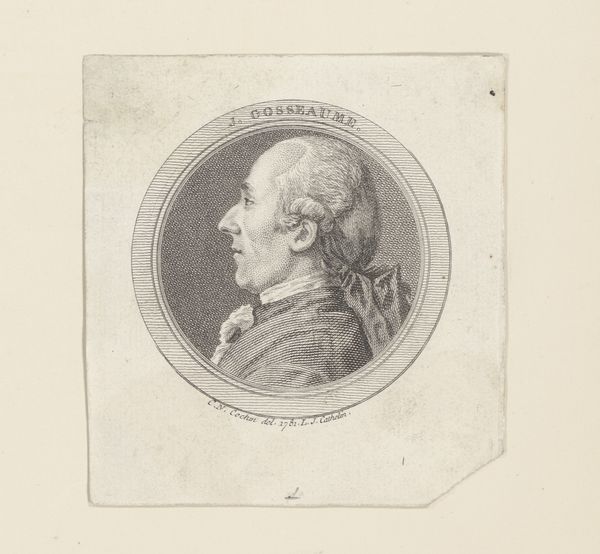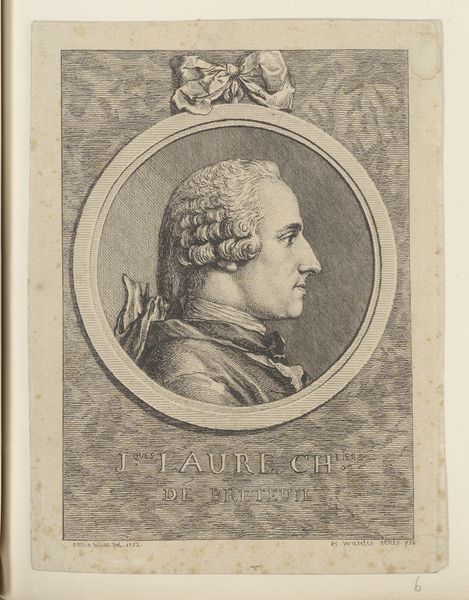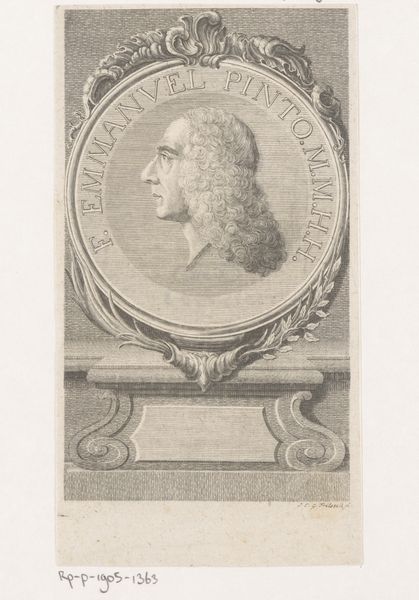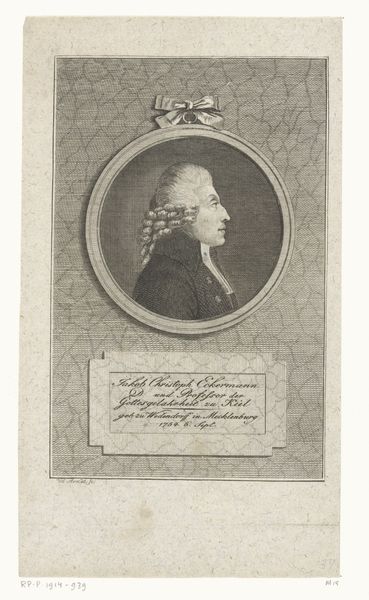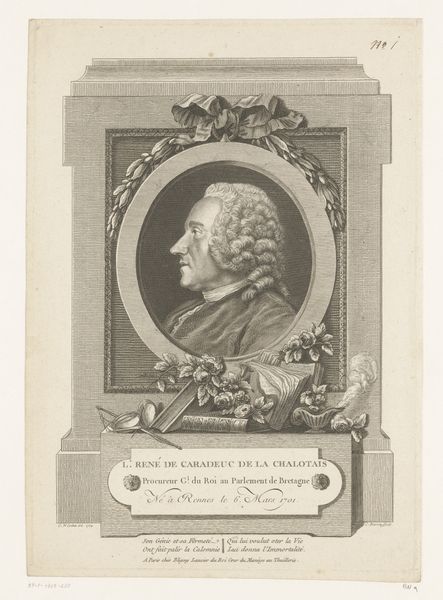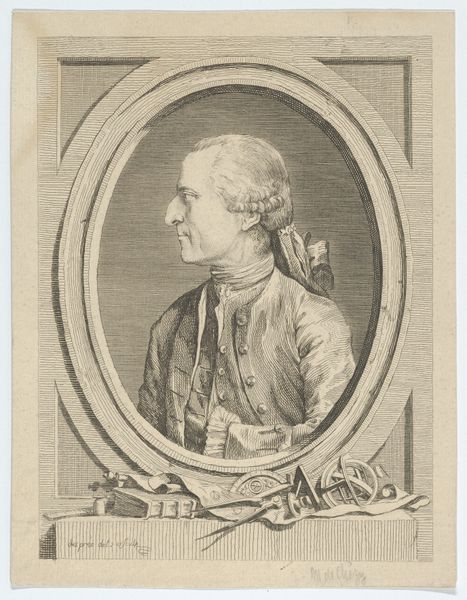
print, engraving
#
portrait
#
neoclacissism
# print
#
form
#
line
#
history-painting
#
academic-art
#
engraving
#
realism
Dimensions: height 188 mm, width 152 mm
Copyright: Rijks Museum: Open Domain
Editor: Here we have Christian Gottlieb Geyser's "Portret van Christian Fürchtegott Gellert," an engraving that was worked on from 1752 to 1803. I find it fascinating how the texture of the printmaking mimics the texture of fabric and hair. How do you interpret the choices around the materials used for this portrait? Curator: I see the choice of engraving, a readily reproducible medium, as key. It democratizes access to Gellert's image. How does the material and process reflect the social value placed on Gellert and his ideas? Consider the labour involved in producing each print versus the access it provides to a wider public. Editor: That’s a great point! The act of reproduction expands access, and thus influence. Is there something in the formal qualities that speak to this as well? Curator: Look at the clean lines, typical of Neoclassicism. Notice also how this approach—focusing on form—would've mirrored Enlightenment values, like reason and order. The medium lends itself to crispness and clarity, devoid of excessive embellishment. What could this imply about how they wished Gellert, and his philosophy, to be perceived? Editor: So the materials and style chosen were tools to shape his image? And the medium’s reproducibility reinforces how accessible those ideals were meant to be! Curator: Precisely. The labor of the printmaker and the material qualities of the print are integral to understanding its purpose: the creation and dissemination of a public figure. This artwork then highlights the complex interweaving of artistic skill, material resources, and social goals. Editor: I hadn't thought of it in terms of labor and access before. Thanks, this gives me a new lens!
Comments
No comments
Be the first to comment and join the conversation on the ultimate creative platform.
